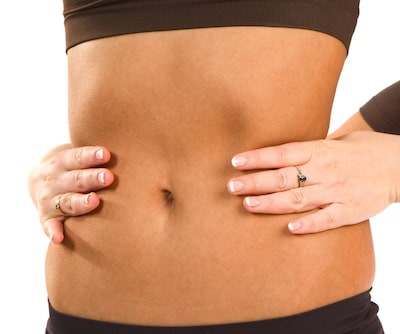Liposuction is one of the most popular cosmetic surgery treatments (according to the American Society of Plastic Surgeons). This procedure removes unwanted fat in select areas of your body. The doctor performs liposuction to sculpt and contour the areas of your body to permanently remove fat cells. The areas of your body that receive this surgery usually include your hips, abdomen, buttocks and thighs. It’s important to note that there are limits to the volume of fat that can be safely removed (about 5 liters), and this is especially the case during an outpatient surgery. If you’re considering undergoing liposuction, here’s what you need to know about the recovery process including how long it will take and tips that can help you heal faster.
Liposuction Recovery Categories
 The liposuction recovery process can be broken up into two categories and they are immediate and long-term:
The liposuction recovery process can be broken up into two categories and they are immediate and long-term:
- Immediate recovery really depends on where the procedure was done on the body and the extent of the procedure. In general, you can return to work in about 5 to 7 days and it’ll take 4 to 6 weeks before you can resume physical activities such as exercise.
- A long-term recovery process can last up to 3 months in order to give time for any swelling to decrease. Following the surgery, you will use a compression garment to apply pressure onto areas where the liposuction was performed. The compression garment helps to reduce any swelling on the body.
While performing the surgery, a solution that has anesthetic in it is used so you won’t be uncomfortable during the procedure. As the anesthetic wears off in a couple of hours, you’ll begin to feel some discomfort. Depending on the area where you received the liposuction, the level of soreness will vary. After 3 to 5 days post-surgery, you’ll head back to your doctor to remove the bandages and compression garments. Patients are often asked to massage the area to move fluid around and smooth out the treated area. In the weeks after the procedure, swelling is expected to decrease gradually but one should also keep in mind that the level of swelling varies per patient.
Importance of Compression Garments
The use of compression garments in the first few days of recovery is very important in helping to drain large amounts of fluid and speed up the recovery process. According to Dr. Howard Sobel, founder of Sobel Skin and attending dermatologist and dermatologic surgeon at Lenox Hill Hospital in New York, “Surgeons vary in the duration they recommend for compression garments, but it’s typically worn for 4 to 6 weeks to prevent bruising and help the skin adhere to its new contour”.
Liposuction Recovery Tips
Hours after the surgery, you will feel sore and it is encouraged to walk around and get blood flowing throughout your body. After you take off your bandages, it’s suggested that you start icing the areas of liposuction to ease any discomfort. Make sure to take anti-inflammatory medications for pain relief. Massages can help decrease swelling but you should wait to try that after a week. Proper rest is important as you don’t want to push yourself too hard while recovering from liposuction. This is true especially in the first three days of recovery. During this time, it is suggested that you not bathe as incisions should be closed and given proper time to heal.
Light exercise can be resumed 24 hours after your procedure. These activities include driving, light household activities and work (if you have a job that lets you sit at a desk). If your discomfort is not as bad as you expected it to be, you still shouldn’t resume activities too soon. At the end of the day, liposuction is still a surgery and you still need enough time to heal and recover.
Liposuction Complications
As with any cosmetic procedure, there is a chance that complications can occur. There could be:
- Skin irregularities such as rippling
- Contour deformity
- Sharp pain
- Scarring
- Anesthesia reaction to anesthesia
- Infection
- Swelling
You should contact your doctor immediately if any of these symptoms occur. This is why it is important that you choose an experienced and board-certified surgeon to perform your liposuction surgery. An experienced surgeon can help prevent these symptoms and/or complications after your procedure.
You should stay in close contact with your doctor to help ensure a smooth recovery. Scheduling a follow-up appointment after the first few days, and staying in touch over the following weeks, is very helpful during the recovery process. Also, make sure to reach out to your doctor and/or a healthcare provider if any issues occur. Liposuction is a plastic surgery procedure and requires many steps and precautions to be taken before, during and after the procedure to help ensure a smooth recovery process. Following the post-op steps assigned to you by your surgeon will keep you on the right track to a successful liposuction recovery.
– JM




